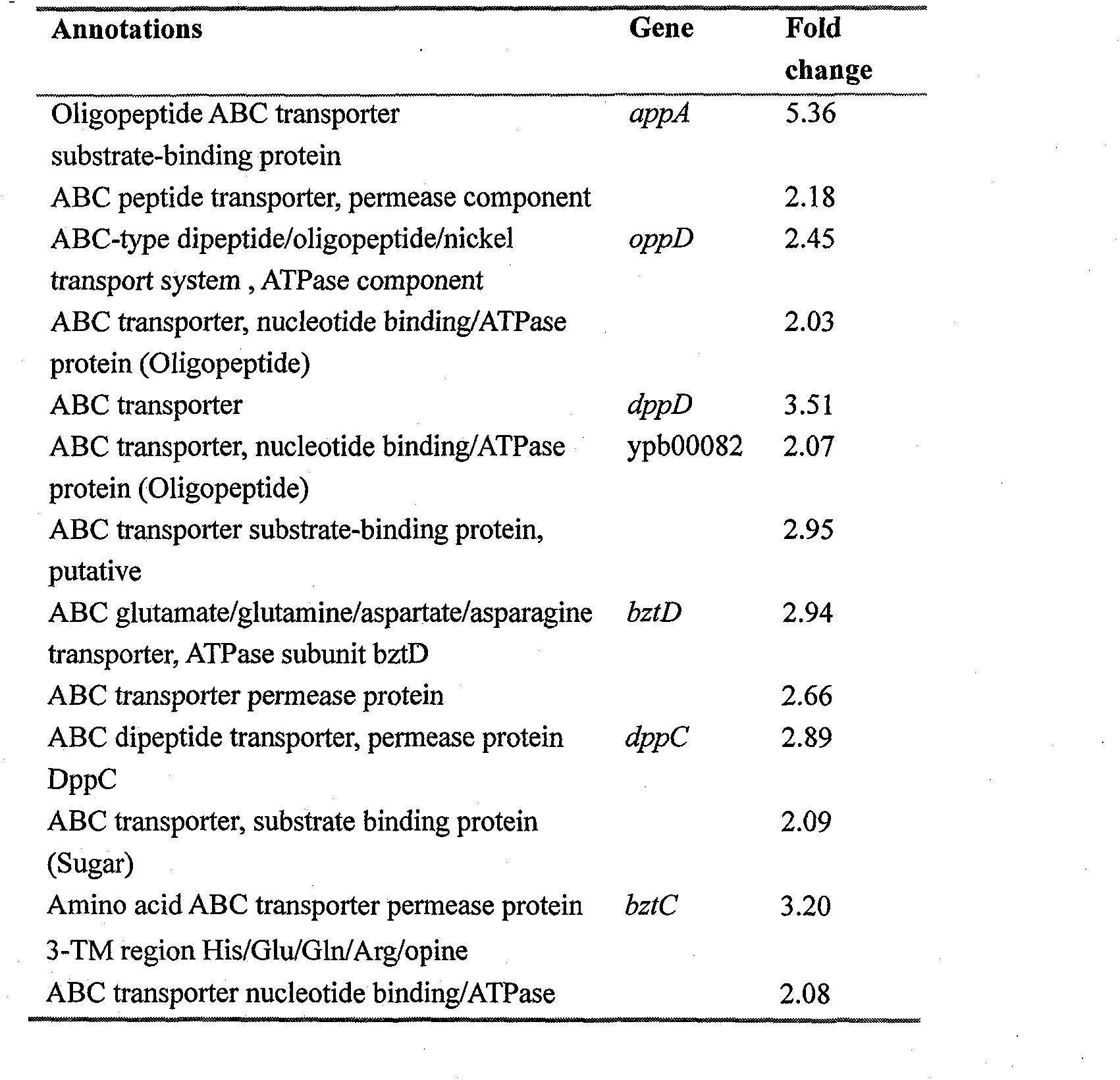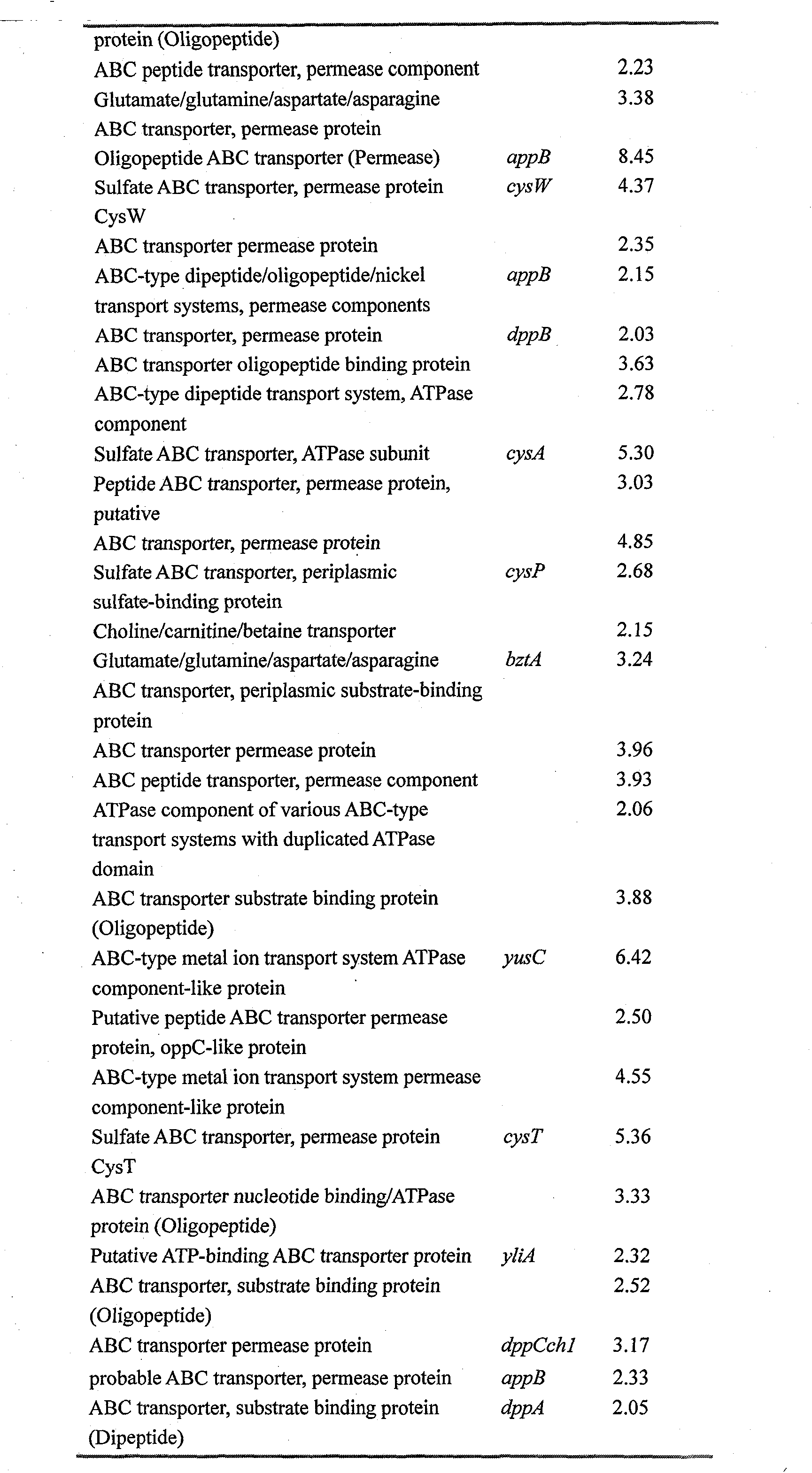Gene capable of regulating and controlling inhibition of vitamin C fermented strain acid production during acid stress
An acid stress and gene technology, applied in fermentation, genetic engineering, plant genetic improvement, etc., can solve the problems of not being able to formulate metabolic engineering strategies and not understanding the microbial response mechanism.
- Summary
- Abstract
- Description
- Claims
- Application Information
AI Technical Summary
Problems solved by technology
Method used
Image
Examples
Embodiment 1
[0029] Example 1 Differences in the Expression of Membrane Transporter Genes in Mixed Cultures and Individually Cultured Common Keto-Colonic Acid Bacteria
[0030] Table 1 Differences in the expression of membrane transporter genes in mixed bacteria culture and single culture
[0031]
[0032]
[0033]
[0034] As shown in Table 1, the expression levels of 45 membrane transporter genes in the common ketogenic cologronic acid bacteria cultured in the mixed culture were 2 times or more than that in the common ketogenic cologronic acid bacteria cultured alone, including 9 Amino acid transporter genes, 13 broad-spectrum ABC transporter genes, 11 oligopeptide transporter genes, 5 dipeptide transporter genes, 4 sulfur transporter genes, 2 metal ion transporter genes and 1 choline / Carnitine / betaine transporter genes (Table 2). From the above results, it can be seen that, compared with the common ketogenic cologne cultured alone, the common ketogenic cologne cells associate...
Embodiment 2
[0035] Example 2 Effects of acid stress treatment on the expression of the common ketogenic cologronic acid bacteria magic transporter gene expression in mixed culture and separate culture
[0036] Table 2 Differences in the expression of membrane transporter genes in the cells of V.
[0037]
[0038]
[0039]
[0040] Table 3 Differences in the expression of membrane transporter genes in the cells of Vulgaris vulgaris ketogenes alone cultured after acid stress treatment
[0041]
[0042]
[0043] After acid stress, 19 membrane transporter genes were up-regulated in the mixed cultured cells of V. , 6 iron ion transporter genes, 2 dipeptide transporter genes, 1 thiamine transporter gene and 1 MscS transporter gene (Table 4). In the common ketogenic cologne cultured alone, 22 membrane transporters were up-regulated after acid stress, including 7 amino acid transporter genes, 7 broad-spectrum ABC transporter genes, and 4 oligopeptide transporter genes. genes, 1 met...
Embodiment 3
[0057] Example 3 Adding iron ions inhibits acid production by fermentation of mixed bacteria
[0058] at 1m 3 Carried out in a fermenter, the concentration of iron ions in the initial fermentation medium is 1.59mg.L -1 , adding final concentrations of 2.38 (1.5 times), 3.18 (2 times) and 7.95 mg.L respectively -1 (5 times) iron ion, fermentation 72h. The results showed that the yield of 2-KLG decreased and the synthesis of 2-KLG was inhibited with the increase of iron ion concentration.
PUM
 Login to View More
Login to View More Abstract
Description
Claims
Application Information
 Login to View More
Login to View More - R&D
- Intellectual Property
- Life Sciences
- Materials
- Tech Scout
- Unparalleled Data Quality
- Higher Quality Content
- 60% Fewer Hallucinations
Browse by: Latest US Patents, China's latest patents, Technical Efficacy Thesaurus, Application Domain, Technology Topic, Popular Technical Reports.
© 2025 PatSnap. All rights reserved.Legal|Privacy policy|Modern Slavery Act Transparency Statement|Sitemap|About US| Contact US: help@patsnap.com



